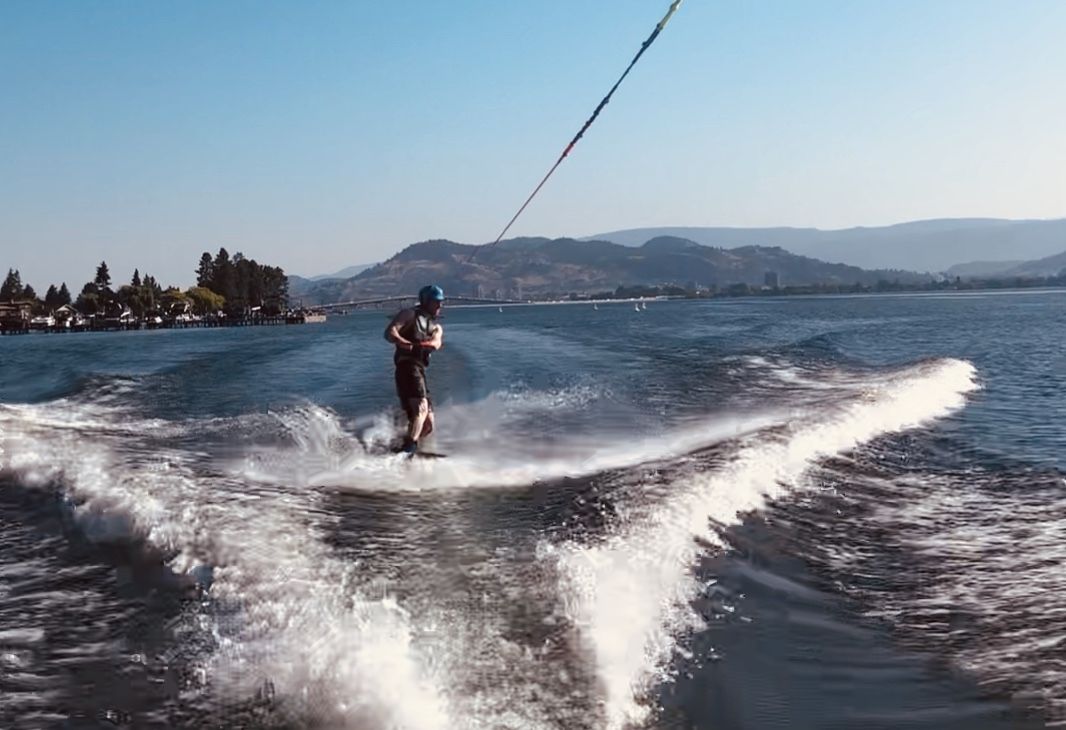Canada’s Okanagan Valley really takes your breath away as vines reach down to the surface edge of the lake that dominates this stunning setting. It’s a place to reflect and admire as well as make award winning, world class wines, says Rebel Pi’s Jackie Fast.
Much has been discussed of British Columbia wines from the Okanagan Valley of late due in part to Jancis Robinson’s recent write up following the annual tasting at Canada House. The achievement to have one of the world’s top wine critics reviewing a wine region that produces just 0.08% of the world’s total wine production is no mean feat and is testament to the wines themselves.
Finally new varietals and regions are attracting the global attention that they so deserve, and small producers are benefiting from the advance of technology making international exportation and global brand awareness financially feasible.

Stunning backdrop of Okanagan valley
Just 866 miles north of global wine destination Napa Valley, no one is more ready to pounce on this new opportunity than the Okanagan Valley who understand that building a global brand goes beyond the bottle. As a native to the area who has done a minimum of one wine tasting day in the Okanagan Valley each year for the past 15 years, I have watched first-hand the advancement of the area. Combining that growth with shifting consumer trends globally, I’d argue the Okanagan Valley will soon be the wine region on everyone’s lips – not just Jancis’.
As we move away from the consumption and accumulation drivers that existed after the destruction of World War II, millennials and every other generation are opting out of accumulating stuff to explore experiences instead. This will have a significant effect on the drinks industry and will certainly benefit regions like the Okanagan Valley – which may not produce the volumes nor the history of Napa but have much more to offer wine aficionados in overall wine experience. This will increasingly drive consumer buying trends globally.
Little and Often
What makes the Okanagan Valley so unique isn’t just the handful of producers that are regularly written about, but the significant collection of small producers that make the area so exceptional. With over 200 vineyards in just 2,400 hectares of planted vines, accessibility for tasting wine and visiting vineyards in the Okanagan is much easier than trekking through the vast lands of Napa Valley which have just 400 vineyards in over 28,600 hectares. In real terms, you’d need to travel 6 times farther to visit as many vineyards in Napa Valley than you would in the Okanagan Valley.

The very stylish setting for the Okanagan Crush Pad Winery has become a key tourist destination
In a typical wine tasting day in the Okanagan Valley, I aim to visit at least five wineries with a much-needed break for fuel in the form of local produce, which if planned in advance can be done all at the same time as I did in my recent trip to Okanagan Crush Pad. Inspired to check out what all the fuss was about, we were guided through the maze of their fermentation ‘eggs’ to an informed tasting of their three wine labels all paired with homemade jams and charcuterie. By comparison, I’m lucky to hit three tastings in Napa eating a packed lunch due to the lengthy car journeys between each vineyard.
When you are on holiday, making the most of your time is of the essence and tasting more wines is better than tasting a few. Especially if the latter includes long stretches in the car with passengers singing American show tunes off-key after a bit too much bubbly.
The Personal Touch
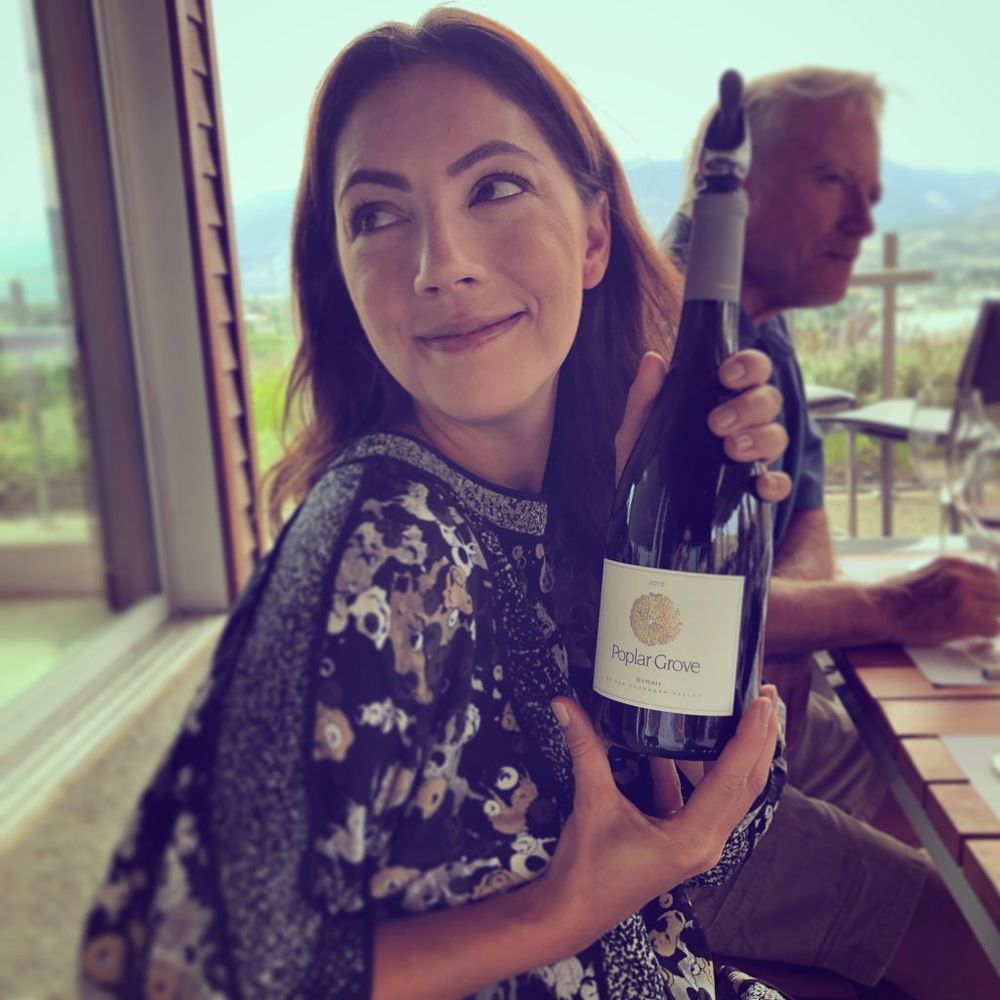
In addition to being known for maple syrup and ice hockey, many associate Canada and those that live there, with being incredibly nice. And that trait is even more noticeable in their wine regions.
In small terms, the personal touch of Canadian wineries can be found in the fact that any tasting charges are waived with the purchase of a bottle compared to Napa Valley which range from $30 – $125 per person regardless of what purchases you make on the day.
In big terms it means that if given the opportunity, most Canadian vineyards will take the time to explain the history and introduce you to the winemaker or founder if they happen to be in the tasting room. These memorable first-hand experiences tap into the ability to store long-term memories for consumers, which is essential when choosing which brands to purchase back home.
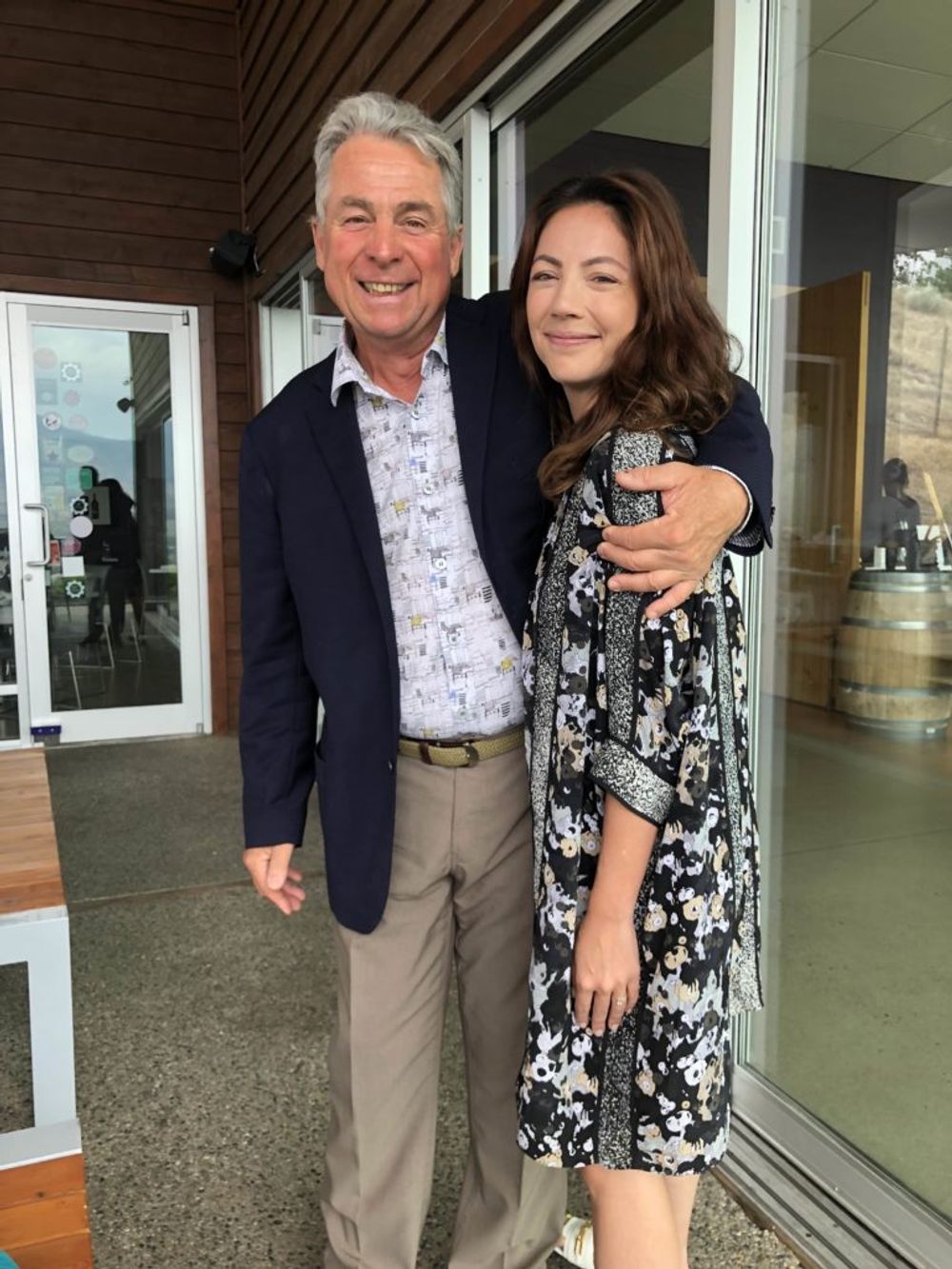
Poplar Grove’s Tony Holler with Jackie Fast at her recent visit and tasting
During my annual stop for lunch at Poplar Grove which arguably has the best view in the area, I was fortunate to run into founder, Tony Holler, who we later found out went to school with my mother who was born in the local town. Proving you can’t get away from the strong sense of community here, no matter how global the business.
The Experience Economy
A staggering 74 percent of people now prioritise experiences over products. Millennials a further 78%. Beyond the traditional media exposure of tasting notes from the few palates of the world, wineries now also need to provide memorable experiences to ensure their commercial success beyond the vineyard.
The population of the Okanagan doubles during the summer with weekend holiday-making Vancouverites and Canadians from across the country taking advantage of the weather, sandy beaches, and summer holiday spots around the lake. It’s these tourists during the short summer season that make or break a small producing winery and executing clever ways to drive footfall by delivering experiences and entertainment has been built out of necessity.
Mission Hill, the largest of all Okanagan wineries, has even built an outdoor Amphitheatre hosting famous recording artists from David Foster to Sheryl Crow, to capitalise on this short window of tourism; but even the smallest wineries offer a programme of events for every taste to bring in new customers.
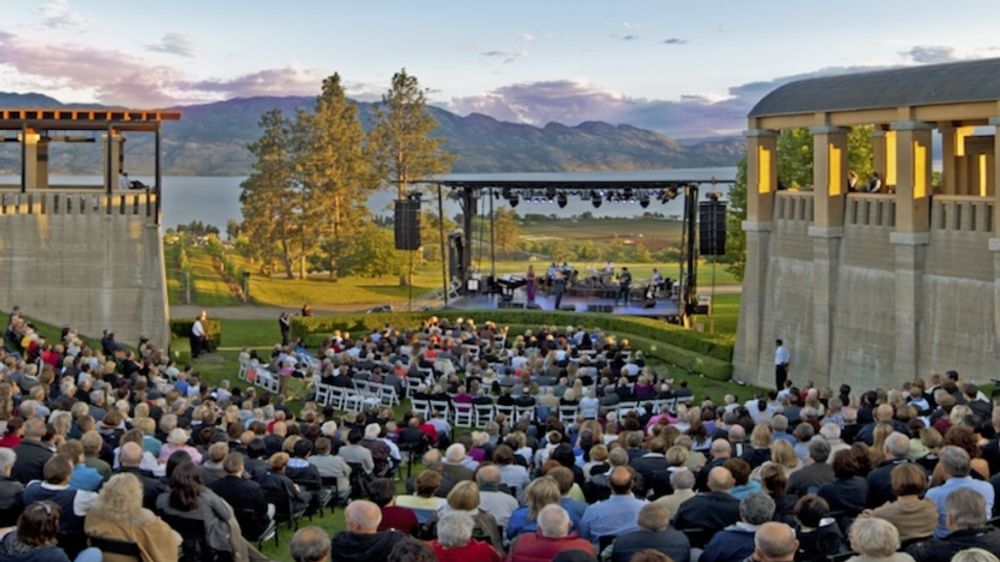
More than just a winery. Mission Hill a classic menu venue too
The drive to creating experiences is so advanced that many wineries are known more for their events than their winemaking. My mother-in-law considers one of her local winery’s annual summer concerts one of the best events in the Okanagan during the summer season even though she can’t stand the wine they make. Tickets to the event are free-of-charge with the purchase of a case in the wine shop. Her love of attending this annual event evidenced by the growing number of bottles from the winery shoved in the back cupboard of the basement.
The Okanagan experience is further enhanced by the lakes that are the cornerstone to the communities with three wineries boasting their own boat docks, enabling you to jump in the water and wakeboard between tastings should you choose. If you don’t have a boat, the vast majority of the Okanagan Valley’s wineries sit shoreside so you can still enjoy watching the water sports while you snap the Instagram-able views to share with your friends back home.
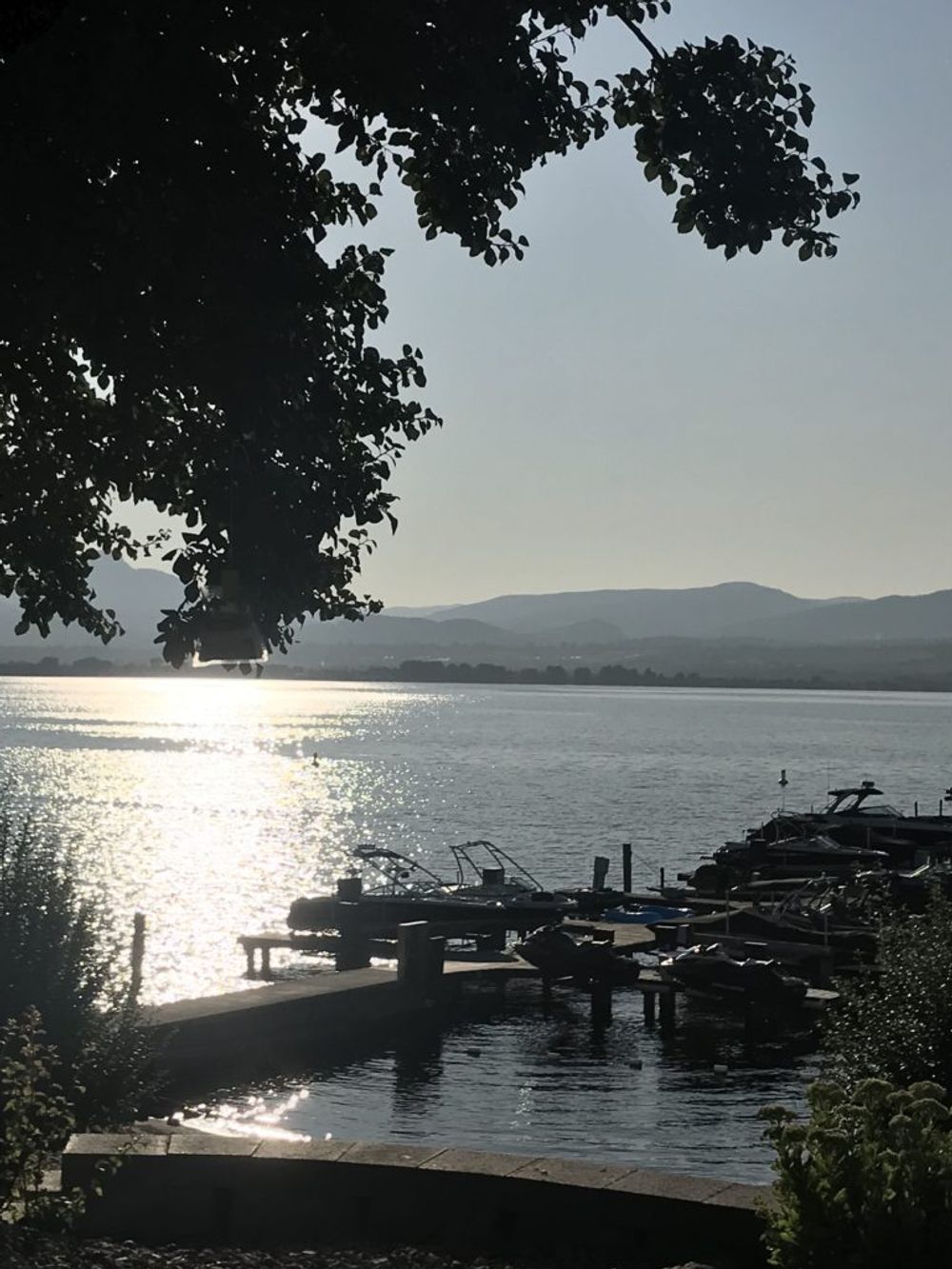
The stunning Okanagan lake
More than the Bottle
Consumers are no longer beholden to the few regions or varietals that are imported into their country by a handful of decision makers. Increasing direct-to-consumer routes and reduced travel costs are building a new consumer with access to the wider world. However, greater access means more competition and driving consumer brand engagement becomes ever more critical to success in an already squeezed margin industry.
Whilst great wine is important, it is no longer the only thing one considers when making a purchase. And no one knows this better than the Okanagan Valley.
